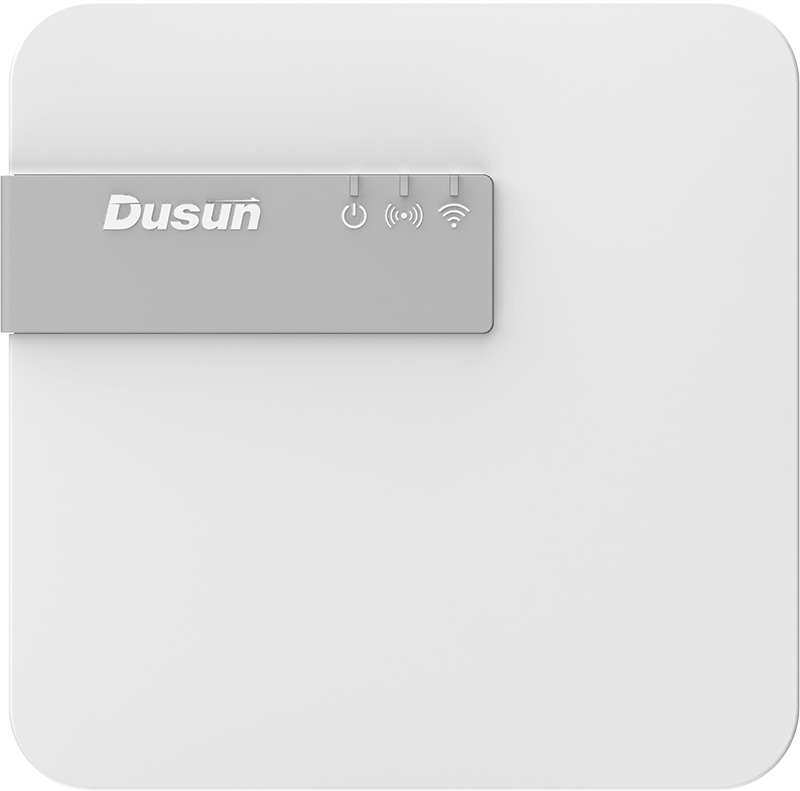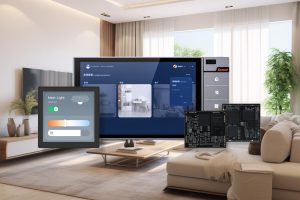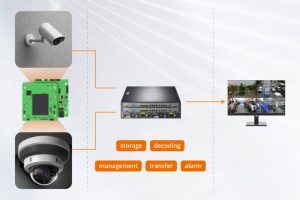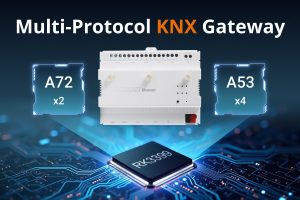DSGW-095
1. Introduction
1.1 Purpose& Description
The DSGW-095 is a Ceiling-Mounted Gateway utilized in smart home systems, the intelligent
security industry, and pension service applications. Serving as a central Gateway, it supports various wireless protocols, including Wi-Fi, LTE, Zigbee 3.0, and BLE 5.2. This allows users to connect to the network through Wi-Fi, Ethernet, or cellular networks.
Additionally, it facilitates the integration of smart sensors by supporting their connection via its multi-protocol features.
1.2 Product Feature Summary
- OS: Debian 11
- USB 5V type-C and PoE power supply
- Processor: RK3328 Quad-core Cortex A53
- RAM: Up to 2GB
- eMMC: Up to 16GB
- Support IEEE802.11ac, IEEE802.11n, IEEE802.11g, IEEE 802.11b Protocol
- Support 4G LTE CATM1, CAT1
- Support Bluetooth 5.2, Zigbee3.0, Z-Wave, Wi-Fi 2.4/5G
- One WAN/LAN variable network port
1.3 Hardware block diagram
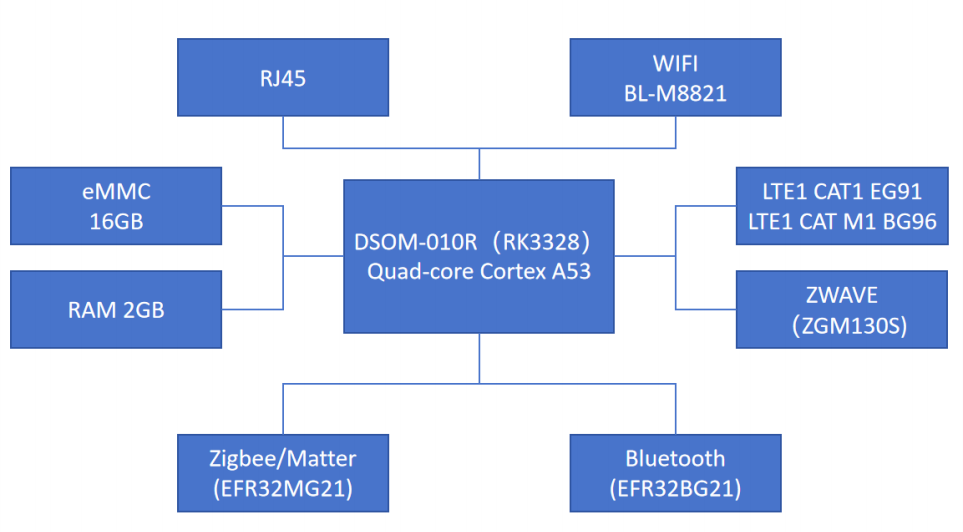
2. Mechanical Requirement
2.1 Drawings
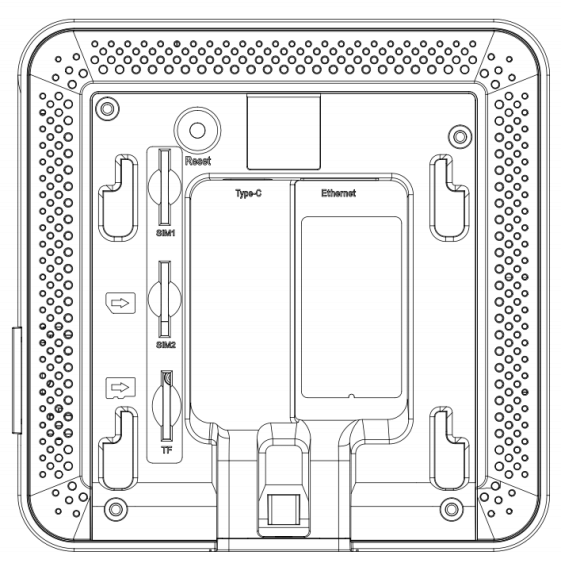

3. Specifications
3.1 Technical Specification
| CPU | RK3328 Quad-core Cortex A53 |
| System | Debian 11 |
| RAM | Up to 2GB |
| eMMC | Up to 16GB |
| TF Card | Up to 128GB |
| Power Supply | USB Type-C 5V/3A, POE |
| Reset | Factory reset button. To reset the Gateway to its original factory settings, press and hold it for more than 10 seconds |
| Network Interface | 1 * WAN/ LAN 10/100 Mbps variable port |
| SIM | SIM Card Slot x 2 |
| TF | 1 * TF slot |
| WIFI | 2.4/5G(BL-M8821) |
| LTE | CAT1(EG91)/CAT M1(BG96) |
| Wireless | Bluetooth 5.2 (EFR32BG210; Zigbee3.0 (EFR32MG21); Z-Wave (ZGM130S) |
| Indicator LEDs | 1) Power(yellow): The yellow light stays on, that is the gateway is switched on. 2) The yellow light is off, that is the gateway is switched off 3) Network(yellow): It stays on after connecting to WIFI or LTE, otherwise it goes off 4) Wireless(yellow): It stays on long after connecting to Zigbee or Z-Wave, otherwise it goes off |
| Antenna | FPC Antenna |
| Installation method | Flat, Ceiling |
| Operating Temperature | -10℃~55℃ |
| Storage Temperature | -20℃~65℃ |
1.1 Purpose& Description
3.2 Performance Requirement
| Wi-Fi Performance | · IEEE wireless LAN standard: IEEE802.11n; IEEE802.11g; IEEE 802.11b · Data Rate: IEEE 802.11b Standard Mode:1,2,5.5,11Mbps IEEE 802.11g Standard Mode:6,9,12,18,24,36,48,54 Mbps IEEE 802.11n:MCS0~MCS7 @ HT20/ 2.4GHz band · Sensitivity: HT40 MCS7 : -70dBm@10% PER(MCS7) /2.4GHz band HT20 MCS7 : -71dBm@10% PER(MCS7) /2.4GHz band · Transmit Power: IEEE 802.11n: 16dBm @HT20/40 MCS7 /2.4GHz band IEEE 802.11g: 16dBm @54MHz IEEE 802.11b: 18dBm @11MHz · Wireless Security: WPA/WPA2, WEP, TKIP, and AES · Working mode : Bridge、Gateway、AP Client · Range: 50 meters minimum, open field · Transmit Power:17dBm · Highest Transmission Rate: 300Mbps · Frequency offset: +/- 50KHZ · Frequency Range (MHz): 2412.0~2483.5 · Low Frequency (MHz):2400 · High Frequency (MHz):2483.5 · E.i.r.p (Equivalent Isotopically Radiated power) (mW)<100mW · Bandwidth (MHz):20MHz/40MHz · Modulation: BPSK/QPSK, FHSSCCK/DSSS, 64QAM/OFDM |
| Sub-g Performance | · TX Power: 14dBm · Range: 100 meters minimum, open filed · Receiving Sensibility:-94dBm |
| Ethernet | · 10/100Mbps |
4. QA Requirements
4.1 Quality &Testing Information
| Information Description | Standard (Yes) custom(No) |
|---|---|
| ESD Testing | YES |
| RF Antenna Analysis | YES |
| Environmental Testing | YES |
| Reliability Testing | YES |
| Certification | FCC |









